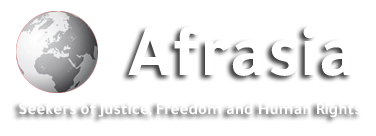
Afrasianet - Newly published documents from the beginning of the Iraq invasion reveal how the NSA used the “war on terror” to develop its global intelligence capabilities and strengthen the surveillance network exposed by Edward Snowden.
The information was revealed in a series of documents dating back to 2003-2004, referred to as WARgrams. This was essentially a series of newsletter-style communiqués distributed to a vast number of NSA employees by the agency’s former director, Michael Hayden. These short messages, which number close to 70, contain colorful (when not redacted) descriptions of the NSA’s plans to insert itself into the Iraq war effort. The revelation was made by VICE’s Motherboard, which obtained the documents through an FOI request from back in 2008.
The documents were published online on Tuesday.
While earlier communiqués deal explicitly with improving communications and information safety on the Iraq battlefield, later WARgrams look toward expanding the agency’s grasp globally, with Al Qaeda as the established boogyman.
The objective of the WARgrams, according to Hayden, was to achieve “unprecedented degrees of cooperation” in US intelligence. They were “designed to keep us all ‘in the loop’ with the latest developments during the campaign,” he wrote.
In one document, Hayden writes: “We will become a pervasive and integral part of the fight.” In others – namely 7, 8, and 9 – the former director describes insertion of NSA agents into the midst of the military as a “force multiplier.” Some documents allude to the agency’s use of encryption technologies to relay battlefield communications.
Several WARgrams touched on the role of the US media in the war coverage, such as in No.10: “As you know, the news media has embedded reporters in those military units that are supporting Operation IRAQI FREEDOM. What you may not know is that NSA also has ‘embedded’ personnel serving in harm’s way,” Hayden wrote.
Another later WARgram says: “And, as I write this, I am noting some remarkable scenes in network news coverage of Baghdad as the Iraqi people shed decades of fear. Watching a statue of Saddam being destroyed and its head rolling down the street brings with it a certain sense of accomplishment. Each and every one of you should take pride in your part in that accomplishment. You deserve to pause for a moment and reflect on what you have helped achieve,” the former director writes in No. 25.
The aims pursued by the NSA are outlined clearly in No. 27: “We approached the war with Iraq as a corporate activity – with [US intelligence] linked in planning and executing. The results are stunning.”
However, not all letters contained subjects that were openly discussed by the NSA leadership. Some only contained references to possible clandestine projects that give off a more ominous vibration. This especially relates to the mysterious “Iraq Battle Brigade” in No. 37, in which Hayden promised that the experience would “shape and inform out response to the next crisis.” And later in 2004, in No. 58, in which “unprecedented cooperation” is openly called for.
In the beginning, the emphasis was always on Iraq and what the NSA could do to help the operation run smoothly there. However, Hayden later talks about surveillance both at home and globally. As is known, Al Qaeda was the main terrorist force for a long time before Islamic State (IS, formerly ISIS/ISIL) came on the scene. There is a paragraph which suggests that the Iraq experience was practice for a worldwide war on terrorism, which would utilize the NSA’s technological edge that was later revealed by Snowden.
A supposed imminent attack on the United States is referenced as the pretext to roll out more complete surveillance back home. “While US and Allied facilities and citizens around the world remain tempting targets for a great number of terrorist groups and movements, the current threat to the Homeland is indeed real, and the clock is ticking,” the former director wrote in No. 61.
According to Motherboard, this was evidence of the early introduction of the bulk data collection that Snowden worked to expose, and which was enshrined in Section 215 of the PATRIOT Act of 2001. According to the documents, the agency also played a key role in the decision to invade Iraq later in 2003.
This shift in focus from the Iraq battlefield to global operations was becoming apparent from the unveiled language that emerged in later WARgrams.
Although some of the documents are dated as early as 1998, this is believed to be a mistake, as all of the WARgrams pertain to specific events in the Iraq war.
The NSA would not admit to the existence of the WARgrams before the documents were finally released. A search of Edward Snowden’s files found references to the letters, but they never made it into any of his data leaks.
The publication of the NSA’s internal communiqués comes just as The Intercept revealed that the agency had used a UK base to launch a string of “kill-capture” missions around the globe.
A base in Yorkshire apparently served as the main hub for ordering kills on suspects in the Middle East.
RT

